40 men died in the Juarez detention center fire this year. 5 came from one Guatemala community
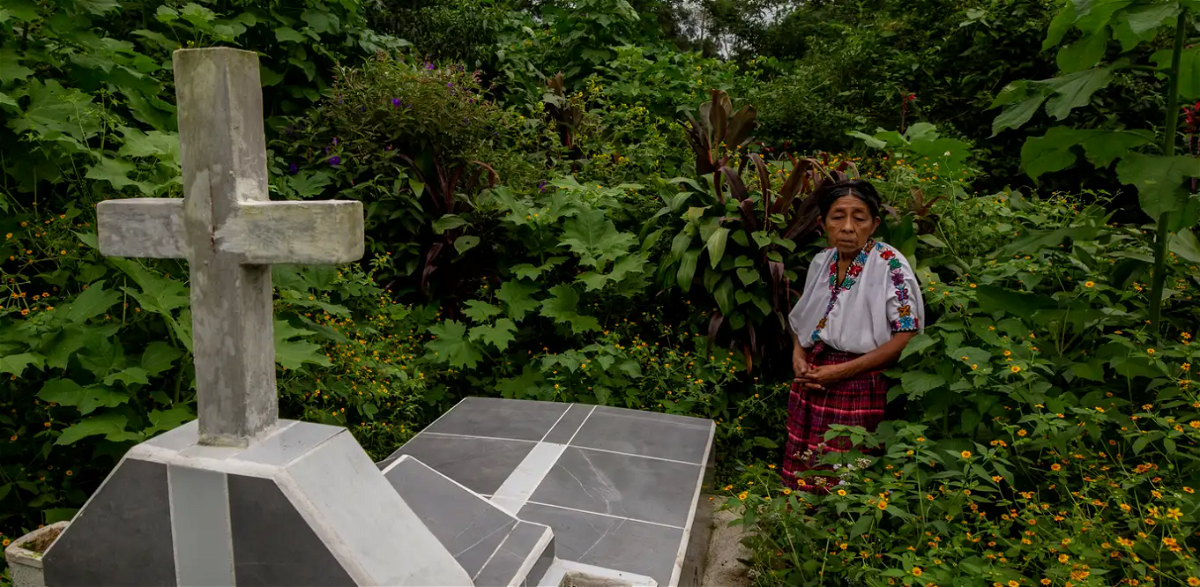
Lauren Villagran
LA CEIBA, Guatemala — Marcos Abdon Tziquin Cuc chopped wood for his 71-year-old mother and left it neatly stacked by her cook fire before he left his rural village for the U.S. border.
The last of Juana Cuc's nine children, 20-year-old Tziquin Cuc wanted to ease his mother's burden. Later, maybe she wouldn't need kindling at all once he had a job in the United States and could buy her glass windows, wood doors and a stovetop like the homes built with U.S. dollars, peppered throughout the lush green forest of his homeland.
He never had the chance.
"The only thing I still have of him is the wood outside, because it was Marcos who brought it to me,” Cuc said. “Whenever I go for the wood, I cry.”

Tziquin Cuc and 39 other men died in a fire inside a migrant detention center in Juárez, México, on March 27. They burned alive or were suffocated by smoke after the guards – for reasons that are still being investigated – failed to unlock their cell door.
The fire came in the middle of a record year for migrant deaths at the El Paso-Juárez border. Their deaths inside a locked cell were an international tragedy – the result, advocates say, of inhumane U.S. and Mexico policies at what the United Nations has deemed the deadliest border in the world.
Tziquin Cuc called his mother when Mexican authorities detained his bus on the outskirts of Juárez in March. Rather than worry, Cuc said she and her husband felt relieved.
Her son’s journey to the United States was over and he would come home safe, she thought. They would celebrate his 21st birthday in the summer and go to church together again on Sundays. He felt his religion deeply, spent most of his free time at the church volunteering as a missionary. In a photograph, Tziquin Cuc stood between the pews with a rosary around his neck, smiling with the face of a young man who had yet to shed his boyish cheeks.
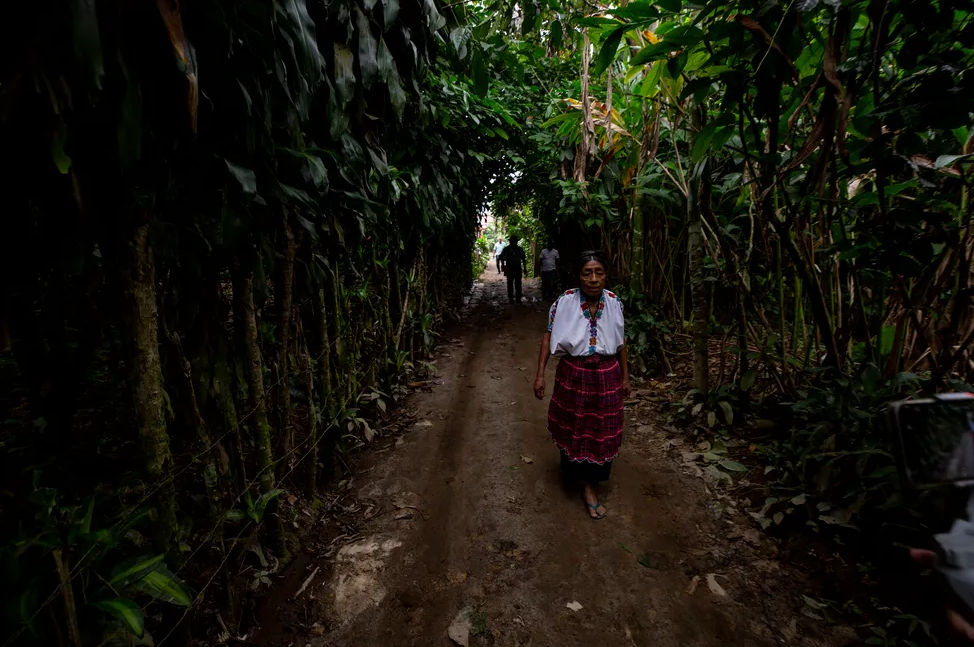
Neighbors came to give her the news.
“Many times I believed it, and sometimes I didn’t believe it was true,” she said as she pressed the photo to her chest and cried, her head hanging, gray-and-black braids tied up like a crown. Her husband sat beside her, his eyes focused on the bare concrete floor.
At the El Paso-Juárez border, her son and the others are remembered by little more than their names on a government list and the images of their lifeless bodies that night, laid in a parking lot under aluminum blankets in the cold.
Cuc keeps the memory of her son warm on a small altar illuminated by candlelight.
In Guatemala, an Indigenous community grieves
Nineteen of the fire victims – nearly half the dead – were from Guatemala. No community bore a heavier toll than the Mayan K'iche villages in the country's Sololá state.
“The news hit hard, because we had never heard of something happening like this,” said Antonio Chox, an elementary school teacher and community journalist in La Ceiba.

Chox lives in La Ceiba, the aldea town that anchors a dozen villages sprinkled along the forested skirt of the volcano Pecul. The volcano rises like a church steeple through the clouds. Banana plants grow two stories tall, and rivers crisscross lush mountain villages linked by their Mayan culture, K'iche language and names.
“What caught my attention were the last names,” Chox said. “We are Mayan, and every community has a particular last name. I knew the ones on the list would be our brothers and cousins.”
News of the deaths trickled down to La Ceiba, as the hours and days after the middle-of-the-night fire were filled with confusion.
On March 29, two days after the fire, Chox put his audio gear in his SUV and headed north to the house of Francisco Tzaj Quemá and Catarina Tambriz Tambriz. He stood with the stoic couple and began to transmit live on Facebook.
Hundreds of people began to connect online from the villages around La Ceiba. The community's diaspora – migrants living in Los Angeles, New York and Atlanta – began joining the live feed.
“Earlier today, they called directly from Mexico, and as far as we understand it, the young man known as 25-year-old Diego Tzaj Ixtos is still alive,” Chox said to the camera, first in Spanish and then repeating everything in K'iche. “This is the good news we have for you today.”
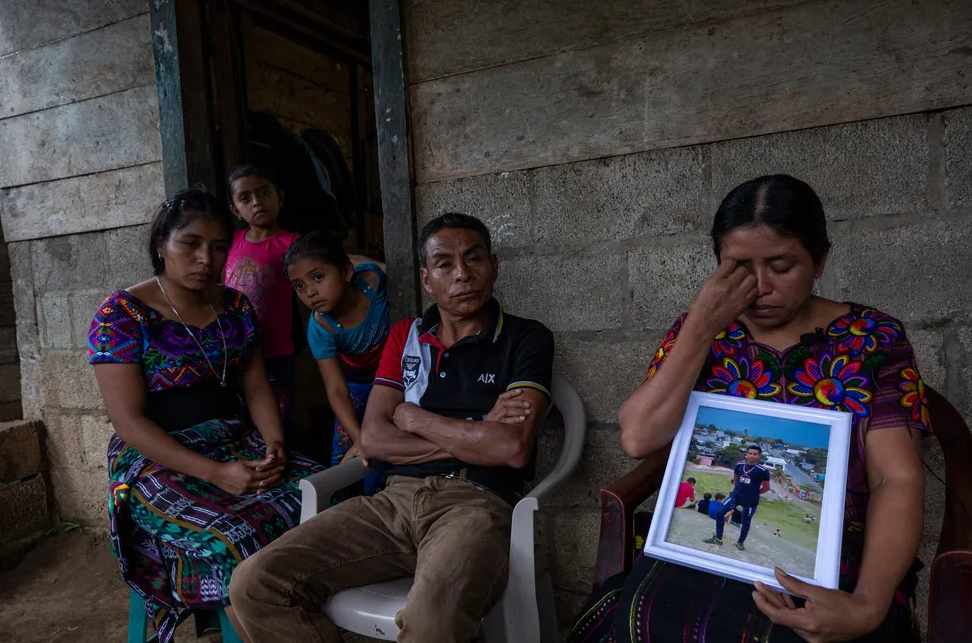
Mexico President Andrés Manuel López Obrador had called the blaze “an unfortunate accident” before later vowing that the perpetrators – including the migrant who lit the fire, the guards and his top-ranking immigration Cabinet minister – would be held to account.
The Mexican government also reported some men as dead who were still alive.
But the parents of Diego Tzaj Ixtos, given momentary hope, would soon learn their son, too, was dead.
Sitting on her porch beside her husband in a torrential rainstorm, Tambriz Tambriz remembered how she begged her son not to go.
“I told him, ‘I can’t tell you what to do,’” Tambriz Tambriz said in K'iche as Chox translated. “I told him, ‘If you want to stay and get married, I will support you.’ He said, ‘No mamá, I don’t want to get married right now. I want to go in search of a better life.’"
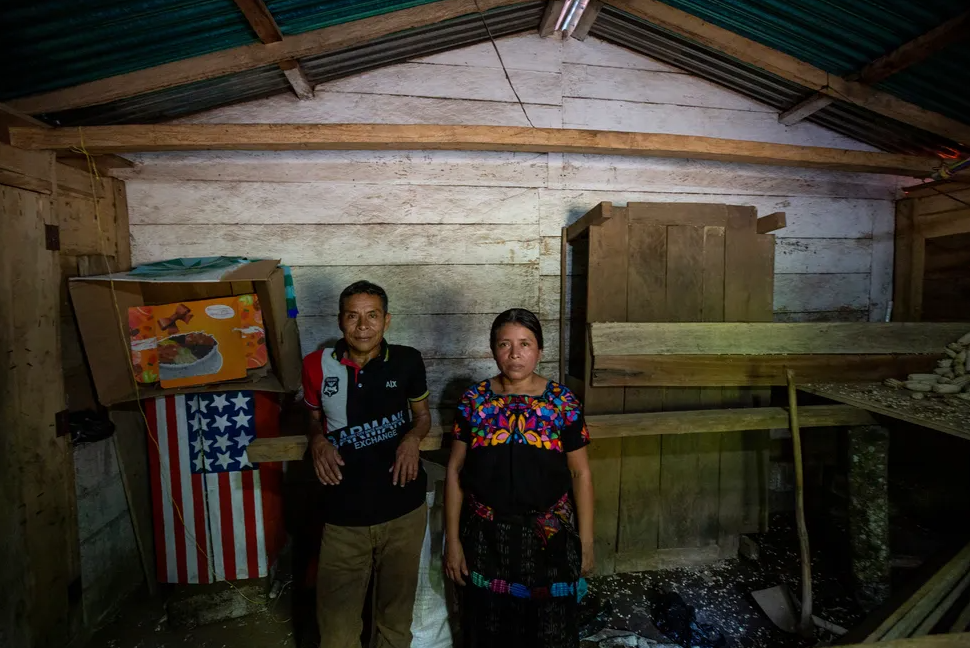
Like Cuc, Tambriz Tambriz had few physical memories of her son to hold on to. There was a single framed photograph of him standing tall in a soccer field, good-looking and strong. He "was a good boy, humble," she said. If he dreamed of going north to the U.S., he never talked about it, she said.
But a sign he harbored an American dream was still standing in the corner of his dirt-floor room: a cabinet he had painted red, white and blue like the U.S. flag.
Abundant beauty, crushing poverty
The abundant natural beauty of La Ceiba exists alongside poverty like poles of a magnet: the pull of home, the push of hunger.
Work is scarce; jobs that pay more than a subsistence wage, nonexistent. The need to help the family survive drove Tziquin Cuc, Tzaj Ixtos and the other young men to quit school early, their parents said, and help their fathers in the fields, harvesting corn or bananas.
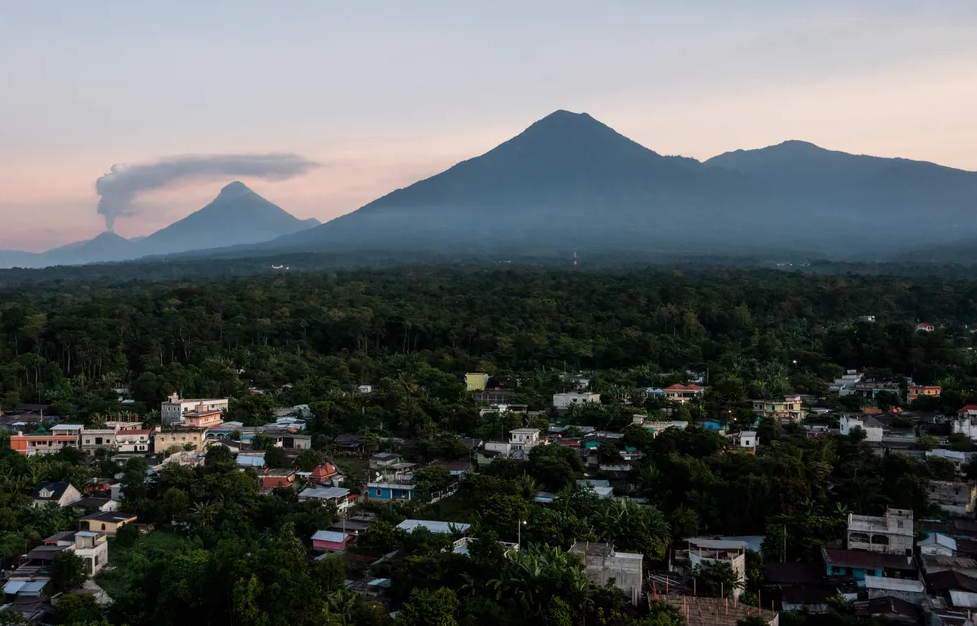
The nearest health clinic is nearly an hour away. If municipal or state governments reach the villages at all, they don't pick up the trash. Picturesque forest trails are littered with garbage: plastic soda bottles and chip bags, candy wrappers and foam cups.
Along the volcano's slopes, people build their houses of block and wood planks, single story, with outhouses and wide porches to keep the rain from blowing in the entrances.
The men chop wood, and the women cook over an open fire.
Migration can be measured in houses, Chox said: Those with glass windows and front doors, tiled floors and second stories are almost always built with U.S. dollars sent home.
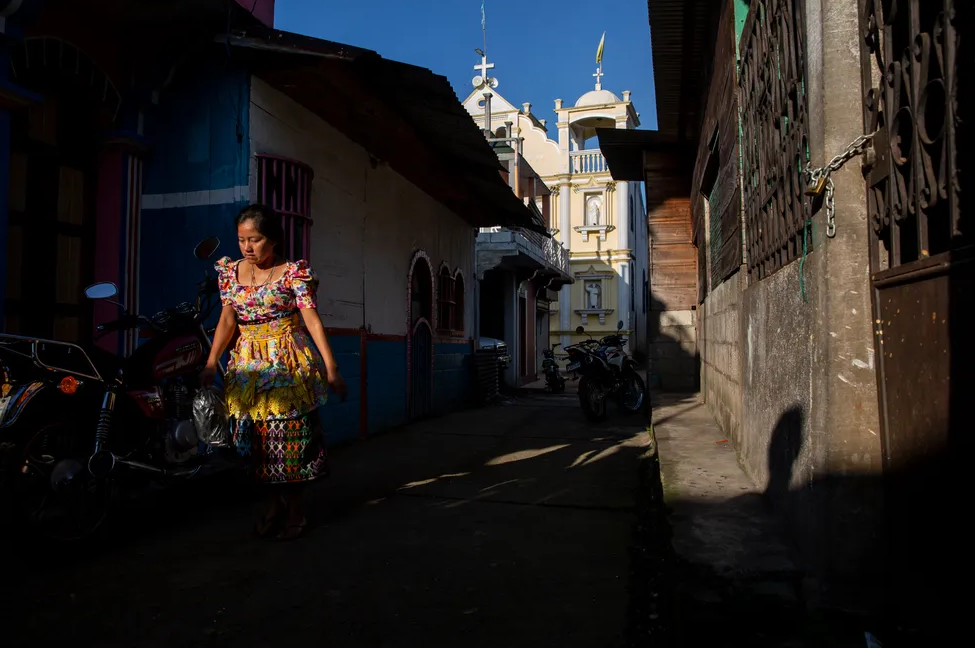
A home next door to Cuc's cottage – the one with the gray stucco facade and fancy doorknob – stood like a lighthouse on a shore, a beacon of what is possible for those who survive the journey to the United States.
Pressures to crack down on migration in Mexico
When the young men of La Ceiba decided to head north, the U.S. was facing historically high levels of migration at the Southwest border.
Tens of thousands of people were lawfully turning themselves in to Border Patrol agents, to seek asylum or refuge, at the Southwest border every week while others were attempting to sneak in illegally.
Juárez in March was as diverse as a New York City neighborhood: People from Venezuela, Colombia, Ecuador, El Salvador, Honduras, Guatemala, Haiti and Cuba were filling up shelters and encampments, looking for day jobs or begging on street corners, awaiting their chance to seek asylum at the U.S. border fence in El Paso.
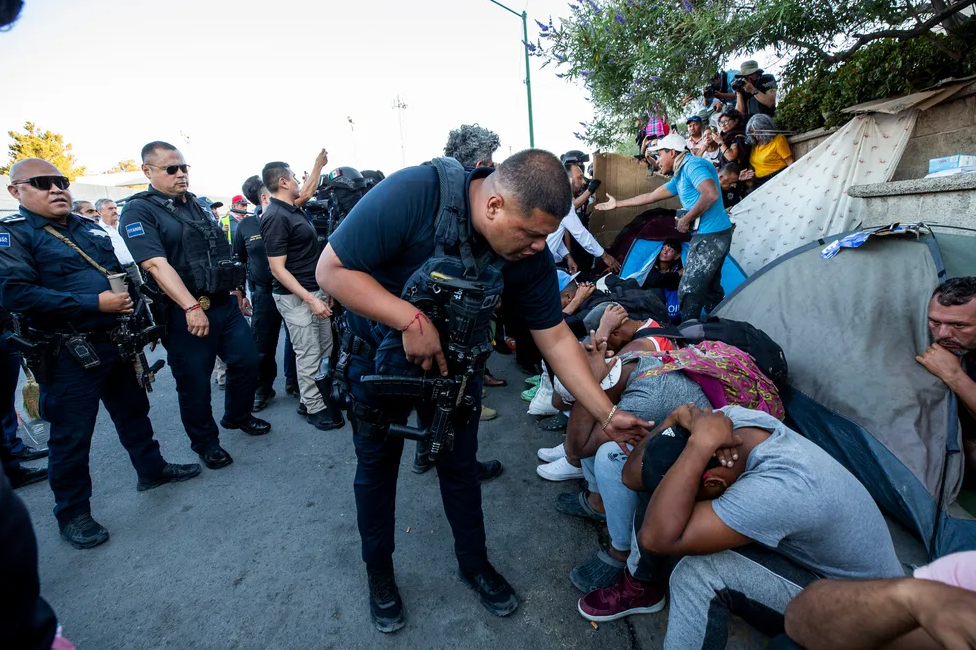
U.S. Border Patrol recorded more than 250,000 migrant encounters in March, including more than 40,000 in the El Paso-Juárez corridor. The Biden administration’s behind-the-scenes pressure on Mexico to slow the flow of migrants north intensified. Texas Gov. Greg Abbott had ordered National Guard soldiers to unfurl coils of razor wire in the river bed, adding to the tension. The El Paso mayor had declared a state of emergency amid the humanitarian crisis, while the Juárez mayor was instructing police to dismantle migrant encampments.
Those actions led to a more fortified border, and migrants were marked as targets, advocates said.
In this context, Mexico's National Migration Institute, known as INAMI, and national guard increased its operations at the northern border. The authorities stopped charter buses at a military checkpoint about 20 miles south of the U.S. border, in the desert outskirts of Juárez.
On the last weekend in March, Mexico’s National Migration Institute coordinated a surprise roundup of migrants in Juárez, arresting — the agency uses the word "rescuing" — dozens of people on street corners and at the military checkpoint.
Tziquin Cuc, Tzaj Ixtos and at least three other young men from Sololá were taken to a detention center. The cells were hidden out of sight behind immigration offices at the foot of the Stanton-Lerdo international bridge connecting El Paso and Juárez.
The Guatemalans were padlocked in a cell: 68 men in total. Only 28 men would survive.
Side-by-side graves
Magdalena Tziquin Cuc lives across a cobblestoned street from her mother, Juana Cuc. When her little brother left for the U.S., so did her own youngest son, 20-year-old Gaspar Josué Cuc Tziquin. They made the trip together.
The night of the fire, neighbors visited Magdalena Tziquin Cuc, too: Her son was dead.
Months later, she won’t speak of his death.
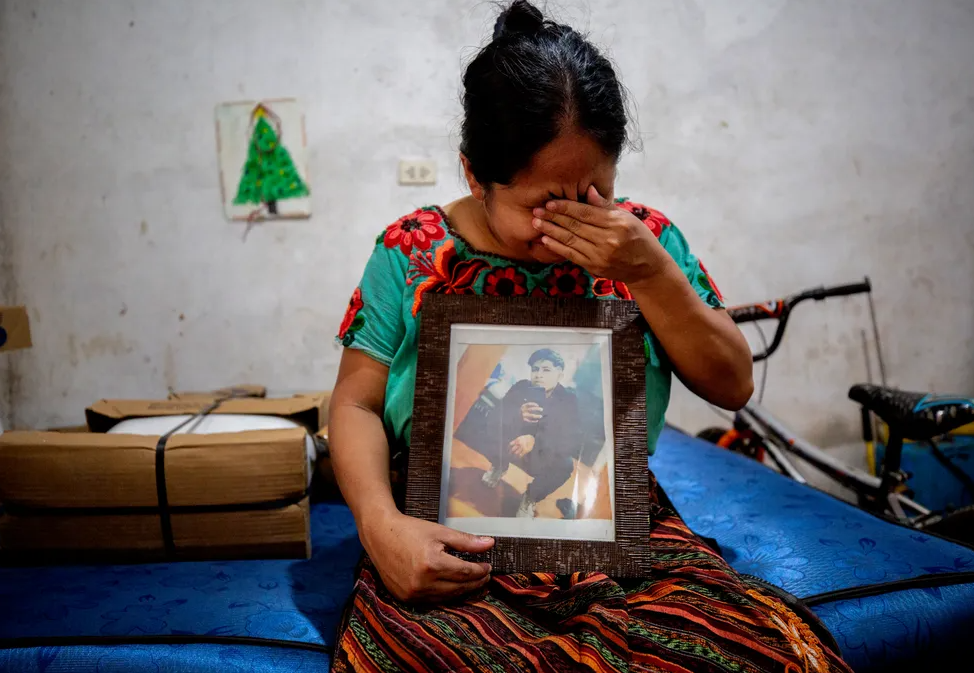
He came home to her like the others did, by airplane in a casket. She refused to attend his burial. She won't visit his grave or the grave of her youngest brother, laid to rest beside her son. She tends a candlelit altar in her son's old room at home.
Their graves face one another, in a cemetery a five-minute walk from the young men's homes.
Cuc Tziquin's grave is tiled in gray and marked with a passage from the Bible: "He who believes in Me, though he may die, shall live." Marcos Abdon Tziquin Cuc's grave is tiled in black and white. Overgrown brush 6 feet tall swallows their tombs.
Cuc visits her son's grave.
"My son told me, 'Mamá, I want to go to the United States. I'm grown and my whole life is ahead of me,'" Cuc said, her voice cracking through tears that became sobs. "I remember he told me, 'When I get there, I can send you some money and give you a home. It's my turn to give to you.'"
